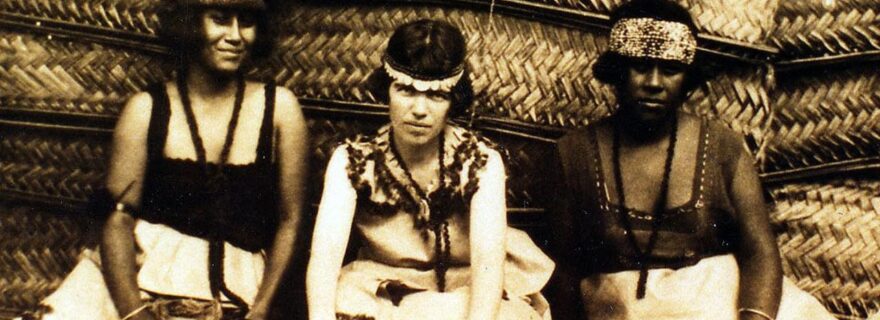Adolescent Mental Health in an Evolutionary Perspective
Although adolescents experience 'storm and stress' differently in societies, there is little systematic work on why adult transition is smooth in some and turbulent in others. Combining evolutionary theoretical framework with cross-cultural data can help us understand how and why teen angst varies.
A 16-year-old Dutch girl sulks out of the house after an argument with her parents about her school performance. A youth on a Pacific atoll runs away after her father threatens to kick her out of the house for coming home late. At various times and places, youth have banded together to defy their elders by engaging in vandalism or holding forbidden dance parties. Although there is an association between social conflict and poor mental health, there has been little systematic effort to investigate how variation in conflict, specifically, along with other dynamic aspects of culture affect youth risk-taking and mental health across societies.
In 1925, Margaret Mead set off to Samoa to investigate if the storm and stress that marked the adolescent period in ‘Western civilization’ is innately human, or if teenagers’ propensity for angst varies according to the restraints imposed by a given society. In Coming of Age in Samoa, Mead argued that Samoan youth were free from the stresses that plagued American adolescents as they encountered relatively fewer role and identity conflicts in Samoan society.
The notion that teen risk-taking and moodiness might be a product of culture, and not a stable feature of human development, was groundbreaking.
In recent years, rising rates of depression and suicidality among adolescents in the West have catalyzed investigations on social drivers of adverse youth outcomes. Social media, modern parenting styles, and other social factors have been identified as potential culprits, but there are few conclusive answers to the question: what factors are a threat to adolescent well-being?
Critical to answering this question is an approach that considers how and why youth mental health outcomes vary across societies, which includes an eye towards evolutionary perspectives on human sociality and conflict.
Evolutionary perspectives on conflict
Contrary to the widespread belief that high stakes conflicts and heightened emotional arousal are conducive to erratic behavior, conflict situations, such as mating contests, and conflict behaviors, such as aggression, are exactly where evolutionary researchers look to identify selective pressures and evolved adaptations.
Male ritual combat behaviors arise due to conflict over mating partners but are designed by natural selection to avoid unnecessary escalation. Males compete in ritual displays to signal otherwise invisible qualities, including the other party’s ability to win a contest and the effort they are willing to exert to win. These displays inform each party whether it is worth persisting in the fight or if it is better to back down.
Parents and children also send signals in the context of conflict. Begging, as portrayed by infant food cries, functions to elicit provisions from parents. In sexually reproducing species, like birds and humans, in which parents and children share 50% of the same genes, there is parent-offspring conflict, wherein the distribution of benefits that is best for the parent is not necessarily the best outcome for individual offspring. Although researchers debate the precise mechanisms that make infant cries stable across a wide range of species, these signals may have evolved as part of a conflict resolution strategy through which offspring bargain with their parents for more favorable outcomes as a form of self-preservation.
Because the parent-child relationship persists into adolescence and adulthood, humans compared to other species, have a wide scope for conflict with parents, including over sexual relationships and status-building activities. Researchers have found that conflicts over arranged marriages, a widespread practice, and the degree to which youth activities serve the interests of the parent versus the adolescent are common sources of family conflict. Recent work on Pacific Islander youth found that when conflicts are not serious, youth use negotiation and temporary social withdrawal to resolve issues. However, in the rarer event of serious conflicts that endanger youth well-being, young people turn to riskier behaviors like running away and acts of aggression.
Cross-cultural variation
There are several social and cultural variables that influence the degree to which the transition to adulthood is smooth or stressful. For instance, anthropologists have observed that rapid social changes, such as the introduction of cash in small-scale societies, can engender conflict as norms change. The introduction of the cash economy has been directly implicated in creating strain in Micronesian families, which, in turn may have contributed to unprecedented surges in suicide among young males.
Social media is a recent cultural invention that has led to drastic social change. Although researchers are still investigating the relationship between social media use and youth mental health, the most promising lines of investigation specifically explore how the quality of interactions on social media, including social competition and conflict, affect mental health outcomes.
The social milieu provides scripts of behavior that may make one course of action more likely than another. Cultural norms around adolescent risk-taking, suicide, and violence, may make certain behaviors more salient to adolescents and thus more likely.
Conclusion
Nearly one hundred years after Mead’s publication, there is still a paucity of evidence about how and why adolescent storm and stress varies across societies. Considering recent alarming trends, it is vital for researchers to systematically investigate adolescent mental health across a diverse range of societies to better understand how societal factors interact with human biology to promote or reduce teen angst.


